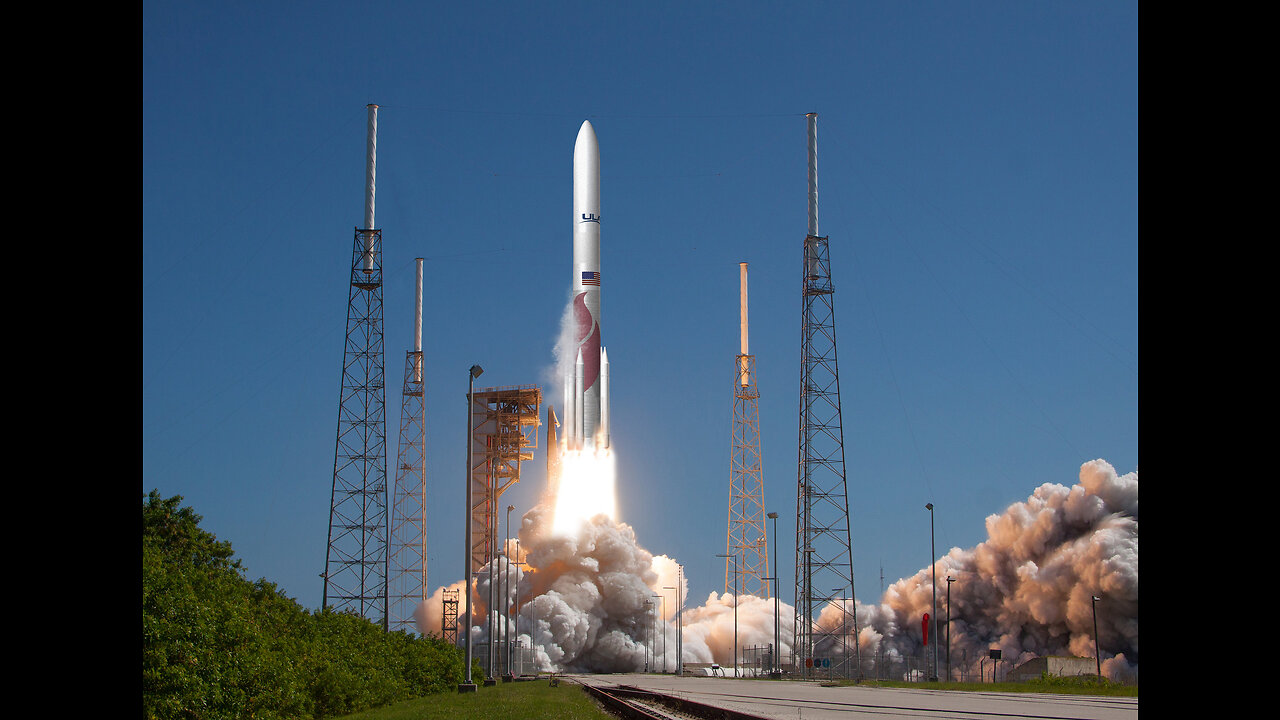Premium Only Content

ULA Vulcan - Flight Readiness Firing
The first launch of United Launch Alliance’s Vulcan Centaur rocket is now scheduled for no earlier than May 4, a date the company says is based on remaining tests of the rocket and its main engines as well as launch windows for its primary payload.
In a call with reporters Feb. 23, ULA Chief Executive Tory Bruno announced the date for the long-awaited inaugural flight of the rocket as the company gears up for a series of tests of the rocket at Space Launch Complex 41. The launch will carry Astrobotic’s Peregrine lunar lander, two demonstration satellites for Amazon’s Project Kuiper broadband constellation and a payload for space memorial company Celestis.
“We are now targeting the fourth of May so we plan our manifest around that and be ready to fly that payload when it comes in,” Bruno said. ULA will have a window of about four days to conduct the launch.
Several factors led ULA to select that date. One is the mission requirements of Peregrine, the primary payload on the launch, which has a window of only a few days each month to fly its trajectory to the moon.
A second is a series of tests of the Vulcan Centaur rocket, currently in the vertical integration facility adjacent to the pad. Bruno said the rocket will roll out to the pad “a few days from now” for tanking tests followed by at least one wet dress rehearsal where the vehicle is fully loaded with propellants and goes through a practice countdown, stopping just before engine ignition.
That will followed by what ULA calls a flight readiness firing, a wet dress rehearsal that ends with a firing of the BE-4 engines in the booster at about 70% of rated thrust for 3.5 seconds. “That is more than adequate for us to understand all of those systems,” he said.
After the flight readiness firing, the rocket will return to the integration facility for payload integration, then be rolled back to the pad for launch.
In parallel, ULA and Blue Origin are finishing the formal qualification of the BE-4 engine, which Bruno described as the “pacing item” for the launch. “It’s taking a little bit longer than anticipated.”
He revealed that, in a qualification test of one of two engines, the liquid oxygen pump had about 5% higher performance than expected or seen on other engines. “When the performance of your hardware has even a small shift that you didn’t expect, sometimes that is telling us that there could be something else going on in the system that is potentially of greater concern.”
ULA and Blue Origin decided to take the engine off the test stand and disassemble it. Engineers concluded that the higher performance was just “unit-to-unit variation” and not a problem with the engine itself, Bruno said.
“Now we’re satisfied and will resume testing shortly with the other engine,” he said. That would allow qualification tests to conclude in time for a launch as soon as mid-April. However, Peregrine’s launch window in April is earlier in the month, hence the decision to set the May 4 launch date for Vulcan.
That’s schedule depends on not just testing of the Vulcan and qualification of the BE-4 but the delivery of Peregrine and other payloads. Bruno expressed confidence that all three customers will deliver their payloads in time for that May launch.
-
 1:45:29
1:45:29
MTNTOUGH Podcast w/ Dustin Diefenderfer
9 hours agoTaya + Colton Kyle: Can American Marriages Survive 2025? | MTNPOD #140
4.78K -
 1:12:23
1:12:23
The Bold Lib
17 hours agoSay Something Beyond W/MikeMac: JOKER - Ep.12
5.42K -
 1:30:13
1:30:13
Game On!
14 hours ago $10.41 earnedChiefs Dynasty OVER, New Longest FG RECORD, and Patriots Are Winning The Super Bowl!
29.5K3 -
 4:02:17
4:02:17
The Bubba Army
3 days agoIS AMERICA OVER TRUMP? - Bubba the Love Sponge® Show | 11/03/25
90.6K34 -
 48:57
48:57
Man in America
19 hours agoThe Sinister Reason They Put Fluoride in Everything w/ Larry Oberheu
373K108 -
 1:06:56
1:06:56
Sarah Westall
16 hours agoAstrological Predictions, Epstein & Charlie Kirk w/ Kim Iversen
106K74 -
 2:06:49
2:06:49
vivafrei
1 day agoEp. 289: Arctic Frost, Boasberg Impeachment, SNAP Funding, Trump - China, Tylenol Sued & MORE!
298K221 -
 2:56:28
2:56:28
IsaiahLCarter
20 hours ago $16.08 earnedThe Tri-State Commission, Election Weekend Edition || APOSTATE RADIO 033 (Guest: Adam B. Coleman)
68.5K8 -
 15:03
15:03
Demons Row
16 hours ago $16.83 earnedThings Real 1%ers Never Do! 💀🏍️
81.5K25 -
 35:27
35:27
megimu32
19 hours agoMEGI + PEPPY LIVE FROM DREAMHACK!
198K15